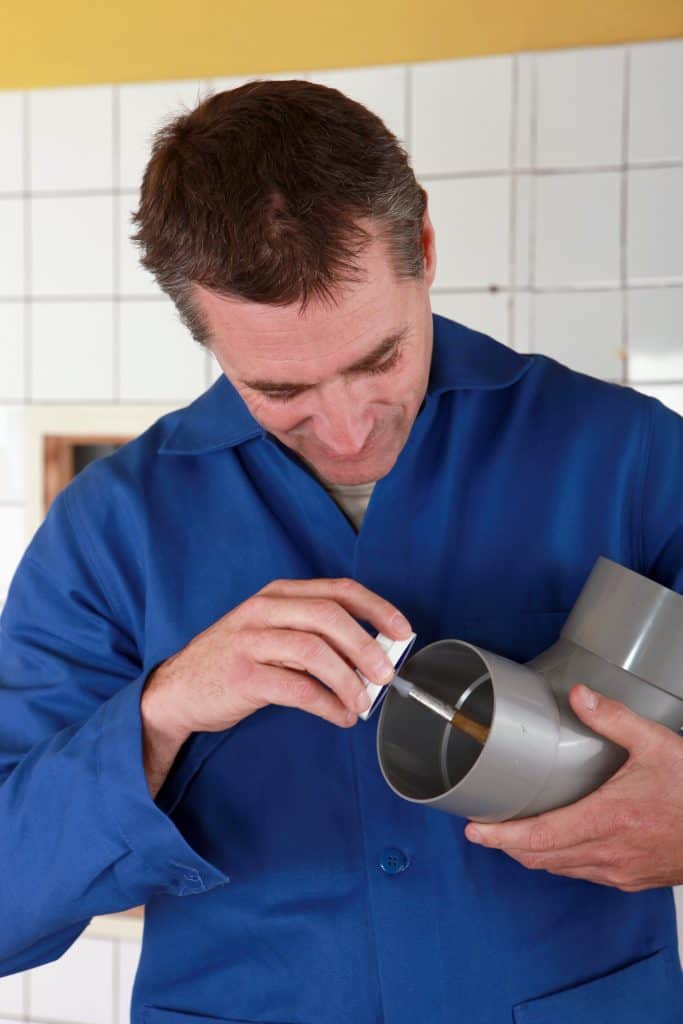If you’re in the plumbing business, there is a high likelihood that you have used PVC cement at some point in your career.
It’s a handy substance that a lot of plumbers simply can’t do without. The only question is, will your PVC cement ever go bad and if so, how will you be able to tell?
PVC Cement can go bad over time. In most cases, it goes bad because it has been left in a cold garage or storage shed and freezes. In some cases, it will thaw out and work again like normal, but this doesn’t happen very often. And other times, it goes bad simply because it’s old.
Who would’ve thought something like PVC cement could expire?
Sadly, it’s true, but there are several ways that plumbers and handymen alike can watch out for this. Read on to learn the warning signs for PVC cement gone bad!

How can you Tell if PVC Cement has Gone Bad?
Yes, PVC cement can indeed go bad. The easiest way for a can of cement to go bad is if it is not stored properly.
It is meant to be used at temperatures between 40-110 degrees Fahrenheit and to store accordingly as well.
- If the temperature drops to freezing or below freezing, it is more than likely to freeze and solidify.
When the temperature increases, the cement might thaw and return to a mostly liquid state. If this happens, you may be tempted to use it still but this might not be a good idea.
There’s a slight possibility that the cement will function like normal but it’s rarely a good idea to test that theory, especially if you’re working on a project for somebody else.
How Can You Be Sure That Your PVC Cement Has Gone bad?
When you open a can of PVC cement, the consistency should be like that of water.
You should be able to lift the brush and have the liquid run off of it just as water would.
- If the consistency of the cement has reached a slimy, jelly-like texture, that is a sure sign that it ought not to be used.
The best thing you can do then is to throw it out and then buy yourself a brand-new can.
Does PVC Cement Have a Shelf Life?
So we know that PVC cement can indeed go bad. Since that is the case, does it have much shelf life? As it turns out, it does!
From the date of manufacturing, PVC cement can have a shelf life of about 3 years or so. That’s not a bad time for a product like that!
You may now be wondering whether anything can be done to improve or increase the shelf life of PVC cement.
Unfortunately, there isn’t a whole lot you can do to increase potential shelf life, but there are ways you can preserve PVC cement for as long as possible. Here are a few of those.
First, you should organize all of your products (PVC cement as well as others) from oldest to newest. Be careful to remember how old each of them is so you can use the older products first and then move on to the new ones later.
This will ensure less waste and much more use out of your product(s).
As mentioned before, the temperature is also a large contributing factor as to how long a can of PVC cement lasts. If it freezes, it isn’t going to work anymore and you’ll have to throw it out.
Make certain that you’re storing it in a place that isn’t overly cold but not too hot either. Pay attention to the can’s instructions; those should tell you all about appropriate storage temperatures.

How Long Does PVC Cememt Last Once Opened?
The shelf life of a can of PVC cement begins the moment it’s sealed in the factory and technically ends the moment you buy the bottle and crack the seal.
Once the bottle is opened, its lifespan significantly decreases and begins to fade. However, you should still have at least a year or two of time before it will start to go bad.
Just as with the shelf life of PVC cement, there are also things you can do to preserve cement that has been opened and used already.
Along with storing it properly, you simply need to be careful about closing it. If you leave the can even partially opened, you are going to risk evaporating the product little by little.
Every time you open the can, solvents and certain ingredients in the substance will slowly begin to evaporate.
So, every time you use your PVC cement, you need to be extra vigilant about closing it tightly and all the way. This way, even an opened can of cement will last a fairly long time.
Check out this YouTube video on how to apply PVC cement.
Blue vs. Clear PVC Cement: What’s the Difference?
Finally, we have one last thing to address and that is PVC cement in different colors.
Does this matter and if so, what does it even mean?
The fact of the matter is that PVC cement with different colors does the same thing but it has slightly different properties. One example is blue vs clear PVC cement.
Clear cement is a little stronger than blue cement.
It has been approved for use on multiple different pipe diameters, including 6″ pipes. The main difference (aside from the color) is that clear cement takes quite a bit longer to set up than the blue stuff. It is recommended for use on regular and commercial projects.
As you’ve probably guessed, the blue stuff is the opposite of the clear stuff.
Blue PVC cement is generally used for emergency repairs because it sets up twice as quickly as clear cement does. It is also waterproof and therefore great for water pipe and sewer uses because it holds up much better.
Now, because these two types of cement have different properties, you might be wondering whether the storage and exposure restrictions are the same or not.
The truth is that yes, you will need to be equally careful with blue cement as you are with clear cement because both can go bad. Store them well and keep the lid shut and you shouldn’t experience any problems!





